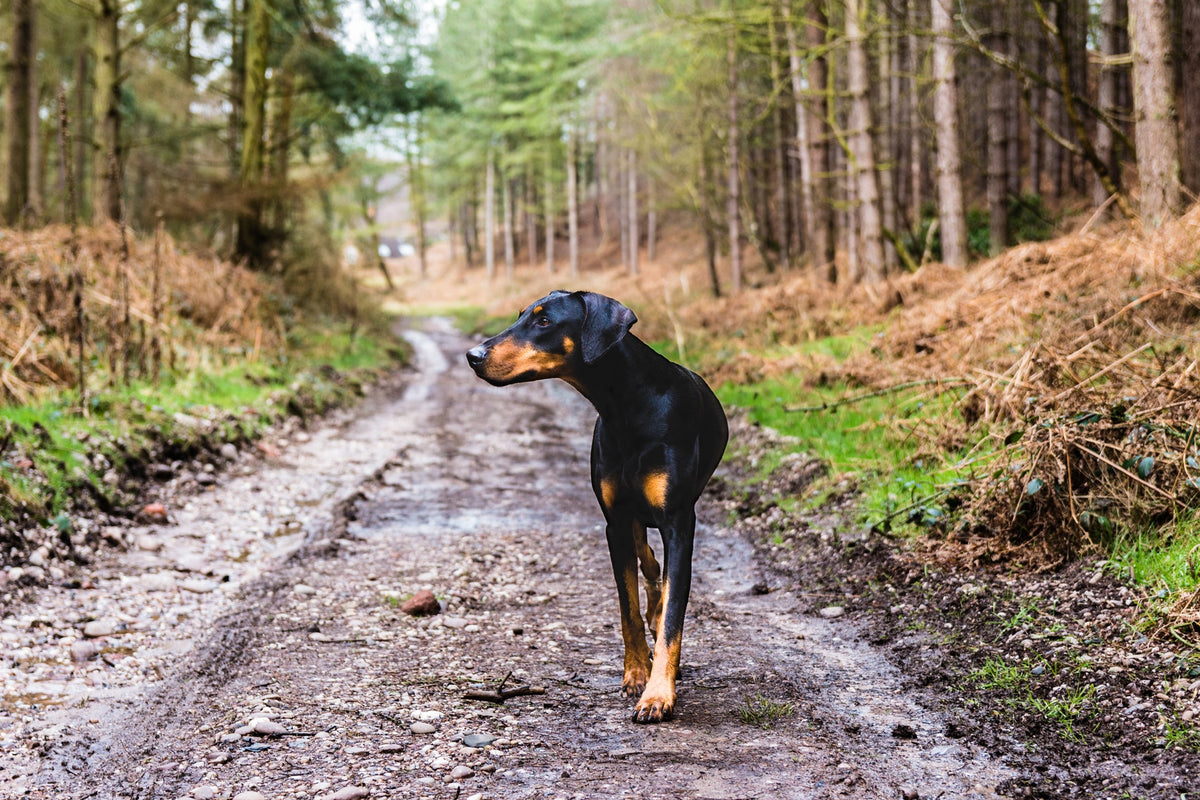
Spring is one of the best seasons to go out and hike. It is one of the most invigorating activities that you can share along with your furry friend. It has variety and stimulation that you and your dog will be able to enjoy. If you aren't hiking, below is a video of why you should.
Moreover, hiking is a great opportunity to bond with your pet.
Before you buy gears and go out on a hike, there are a few consideration and preparations you need to do to enjoy the great outdoors with your pet. Hiking is an enjoyable way to exercise and bond with your pet, but only if you know what you are doing.
Below are some preparations you need to do in order to prepare your dog for the hiking season:
Consult with Your Vet First
Pay a visit to your vet and tell him or her that you are planning to go out on a hike with your dog. Here are a few questions to ask your vet:
Is my dog physically ready?
Your dog's bones need to be fully developed in order to safely take them out on hikes. When your dog reaches adulthood that's the time where it is safe for them to go out on a hike. This is usually when your dog is 1 year old. Larger breeds, however, can have fully developed bones by the time they're 2 years of age.
Your vet will then do tests to determine if your dog is physically ready for a hike. Your dog's health conditions are taken into account as well before your vet can give you a go signal.
Is vaccination necessary?
This depends on the area you'll be hiking it. Say to your vet a hiking spot that you'll be interested in going with your dog so that he or she will advise vaccinations and preventive medicines. Better safe than sorry.
Teach Your Dog to Obey You
A well-trained dog is less stressful, particularly in an unknown environment. Make sure that before you head out with your pet together that your dog is able to listen to your commands. You need to keep control of your pet all the time. If possible, make sure that your pet has enough dog obedience training that you'll be confident to take them out on a trail.
Now is also the time to expose your pet to cyclists, animals like horses, squirrels, a person passing by, and another dog before going out on a hike. By getting your dog used to this, she won't be surprised, run scare or show aggressive behavior out on the trail.
Find the Perfect Trail
Find a trail that suits you and your dog's experience on the trail. For starters, choose a trail that has enough wooded areas so that you and your dog won't overhead. Also, choose trails that are soft with not too many sharp rocks. Sharp rocks could hurt your dog's paws.
Take into account how active your dog is. Some dogs like German shepherds could go on for hours while others like Shih Tzus won't last even for an hour.
Ready the Essentials
Food
The trail will burn off more of your dog's energy than an average walk in the park. This is why you need to bring in more dog food than what she usually eats. A general rule is to start with her usual serving amount, then add one cup every twenty pounds of your dog's weight. You may want to increase the amount to 50% if the trail is difficult.
Also, consider your pet's fitness and activity out on the trail. If she runs all the time, then she is going to expend a lot of energy on the trail. Increase the amount of food if you expect your pet to be hyperactive on the trail.
Water
Bring enough water that your dog can drink for every 30 minutes in the trail. On hotter conditions, increase the frequency to 15 minutes. When you are thirsty, your dog could be thirsty as well. Ensure that your pet's water bottle is enough to last the entire hike.
Leash
Your pet should have a collar with up-to-date identification so it is easy to locate in case you're separated. Some trails would require dogs to be held on a leash. If this is the case, carry a leash no more than six foot in length. You'll have better control of your pet in case she chases wildlife. Don't use the retractable leash as it could get tangled in the bush.
It is a good trail etiquette on the trail for your dog to not bother children, people, and other dogs. If you meet another dog on the trail, allow your dog to greet him then move on as quickly as you can.
First Aid
Have two types of first aid kits: One for you and one for your pet. Your dog's first aid kit should contain bandages, scissors, dressing, thermometer, tweezers. Keep in mind the dog-specifc things that your dog might need in an emergency.
Get in Shape
Once you've figured out where to go on a hike with your dog, start building up cardio and endurance. Start walking or running program with your dog to build up cardiovascular strength and improve endurance. Go on a short walk first, then start working up to longer walks or runs. Make sure that you and your pet has enough water to get you throughout your training sessions.
Practice Proper Trail Etiquette
Abide by these trail etiquettes so you'll have healthy and productive hiking sessions all the time:
Choose only dog-friendly hiking destinations. This is the most obvious, but people often fail to abide by it. Research for trails and pet-friendly nature parks. Do note that dogs are not allowed in most national parks, but are very much welcome in national forests. Never attempt to bring your dog on a trail that is clearly marked "No dogs allowed".
Know the leash law. Your dog should have enough leash skill and excellent recall. Your dog should be able to hike at a true heel or slightly behind your knees. If your dog yanks the leash, he's not trail-ready. Train him first before you go out on a hike.
If taking your pet out on a leash, make sure that your pet always stays in sight. Your dog should be able to go to you as soon as you call him. He should be able to follow basic commands like sit, stay, off, come, leave it, no, etc.
Yield right of way to all others when you hike with your dog. This means that when you see someone going opposite your direction, they should go first. Get your dog out of the sniffing range of your pet. If they are off the leash, leash him immediately when you see someone coming. Let him stay on a particular spot until all the hikers have passed.
Pack your dog poop. You are responsible for cleaning up your dog waste. Don't leave your dog's poop on the trail and let nature takes its course. Other hikers are coming and going on the trail and stepping on your dog poop shouldn't be their problem. Moreover, your dog's poop contains pathogens that could contaminate drinking water. The best way to clean up your dog poop is to bag it out. You can bury it under the ground but make sure that it is around 6 inches deep and away from water sources.
Take only photos, leave only pawprints. Don't create new trails by treading on new paths. Don't throw trash everywhere keep it in your pocket and throw it when you leave home. Don't take wildlife, plants, etc leave everything as is.
